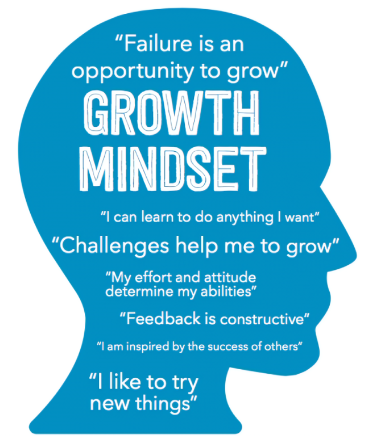Self Doubt
One of the hardest things when first starting out on your fitness journey is not waking up at 5 am to go for the 5-kilometer walk or even logging calories. In my opinion, the hardest thing was my self-doubt. Turning negative thoughts into positive thoughts was more difficult than stretching those “out of shape” muscles.
We’ve all encountered that critical inner voice that seems to highlight our shortcomings and mistakes. These are negative thoughts, a common experience across different backgrounds and personalities. They can range from a fleeting sense of self-doubt to persistent and intrusive patterns that impact our mental health and daily functioning.
The potential consequences of persistent negativity can be far-reaching, affecting not just our mood but also our relationships, productivity, and overall satisfaction with life. When we’re stuck in a loop of negative thinking, it can distort our perception, leading to stress, anxiety, and even depression.
Negative thoughts often have specific triggers, such as stressful events, personal setbacks, or certain social interactions. Becoming aware of these triggers is a crucial step towards managing our thought patterns. It’s not just about being positive all the time; it’s also about developing a balanced and realistic mindset that enhances our ability to cope with life’s challenges.
Addressing negative thoughts isn’t just beneficial; it’s essential for our mental well-being. The first step to change is understanding the nature of these thoughts and how they affect us. Once we’ve established this foundation, we can begin to identify and modify the patterns that hold us back.
Identifying Your Negative Thought Patterns
Recognizing and acknowledging the presence of negative thoughts is a pivotal step in the process of changing them. This act of identifying them may seem straightforward, but it’s often more challenging than one might expect. Our thoughts can be swift and automatic, making it difficult to catch them in the moment.
I’ve found that the key is self-awareness. This isn’t about scrutinizing every thought you have but about noticing trends. Paying attention to your thoughts, especially during or after specific events that might trigger negativity, is crucial. It’s similar to understanding your body’s signs of stress. When you’re aware of these signs, you can act before they take over.
I notice that when I go for my morning walks, the “negative nellies” can slip into my thoughts. I now act on those straight away with some of the strategies below. I have noticed the more I act on these negative thoughts the less often they occur.
One tool that can aid in this self-assessment is a thought journal. By keeping a daily log of your thoughts, you can begin to notice patterns. For instance, you might find that you’re particularly harsh on yourself when making small mistakes or that certain social situations trigger a flood of self-doubt. Writing down your thoughts can also separate them from your sense of self, making them easier to manage.
Your thought journal doesn’t need to be elaborate. Simply write down any persistent negative thoughts that come to mind, the situation you were in when they occurred, and how they made you feel. Over time, you will begin to notice similarities and triggers, paving the way to address them proactively.
Strategies to Transform Negative Thinking
Changing the way you think isn’t an overnight process, but with patience and practice, you can learn to shift your mindset to a more positive one. Cognitive-behavioral techniques are particularly effective in this change. These strategies involve identifying distressing thoughts and challenging their validity.
Let’s begin with one technique known as ‘thought stopping’. When a negative thought enters your mind, mentally say ‘stop’. Visualize a stop sign, and switch your thinking to something more constructive or positive.
Positive affirmations also play a role. When you regularly reaffirm your worth and capabilities, these affirmations can gradually replace the negative narratives in your mind. Create a set of positive statements that resonate personally with you, and repeat them daily.
Mindfulness and meditation are valuable for maintaining focus on the present moment. By grounding yourself in the moment, you’re less likely to become ensnared by false worries.
Start by focusing on your breath or surroundings and living in the moment. Do not get dragged down by thoughts that are irrelevant to the task at hand.
Lastly, it’s essential to understand that some beliefs we hold about ourselves or the world might be irrational or overly pessimistic. By challenging these beliefs and testing them against reality, you can reframe your thinking into one that is more balanced and realistic.
Maintaining Positive Mindset Shifts
Creating a new pattern of positive thinking isn’t a one-time fix; it’s an ongoing practice. Like maintaining a healthy lifestyle, you need to reinforce positive habits continually. Practical steps help solidify the progress you’ve made and avoid falling back into old ways.
One of the most effective methods of supporting a positive mindset is integrating lifestyle changes that promote well-being. Regular exercise, a balanced diet, and adequate sleep can have a profound effect on your mental health. Adjusting your daily routine to include time for relaxation and hobbies you enjoy can also make a significant difference.
Read more here about “Dieting”
Building a network of support is invaluable. Friends, family, or a community of like-minded individuals can offer encouragement and provide a different perspective when you’re faced with challenges. Sometimes, just voicing your thoughts to someone else can help in diffusing their negative power.
Setting realistic goals and acknowledging the strides you’ve made encourages continued effort. Be patient with yourself; transformation doesn’t happen overnight. Celebrate the small victories along the way—they add up.

Finally
if you find your negative thoughts are deeply rooted and persistent, it may be time to seek professional help. Therapists or counselors can provide personalized strategies and tools to aid in overcoming long-standing patterns of negative thinking. Remember, asking for help is a sign of strength and an important step in moving towards a healthier mindset.
Incorporating exercise regularly reinforces a positive attitude that helps negate those “niggling thoughts”
Read more here about “effective exercise with minimal effort”
Steve

Your Lazy Athlete in the flesh.
Some of this content was produced with A.I. but most is personal opinion and experience.
Some links on this site may be affiliate links, and if you purchase something through these links, I will make a commission on them.
There will be no extra cost to you and, you could save money.
Read our full affiliate disclosure here.

